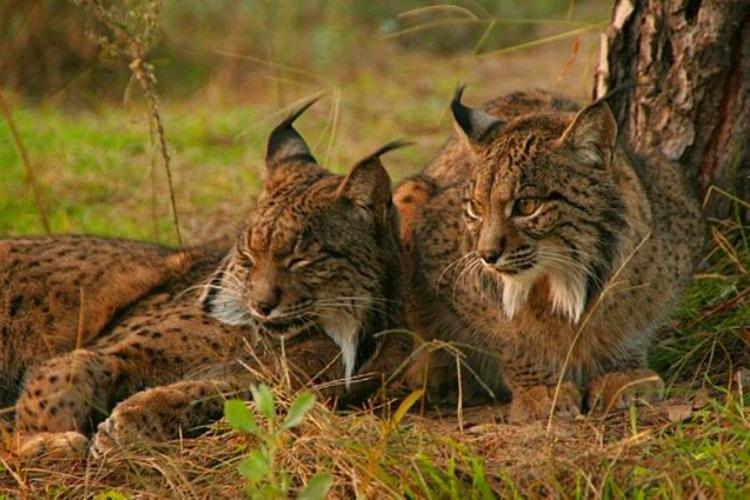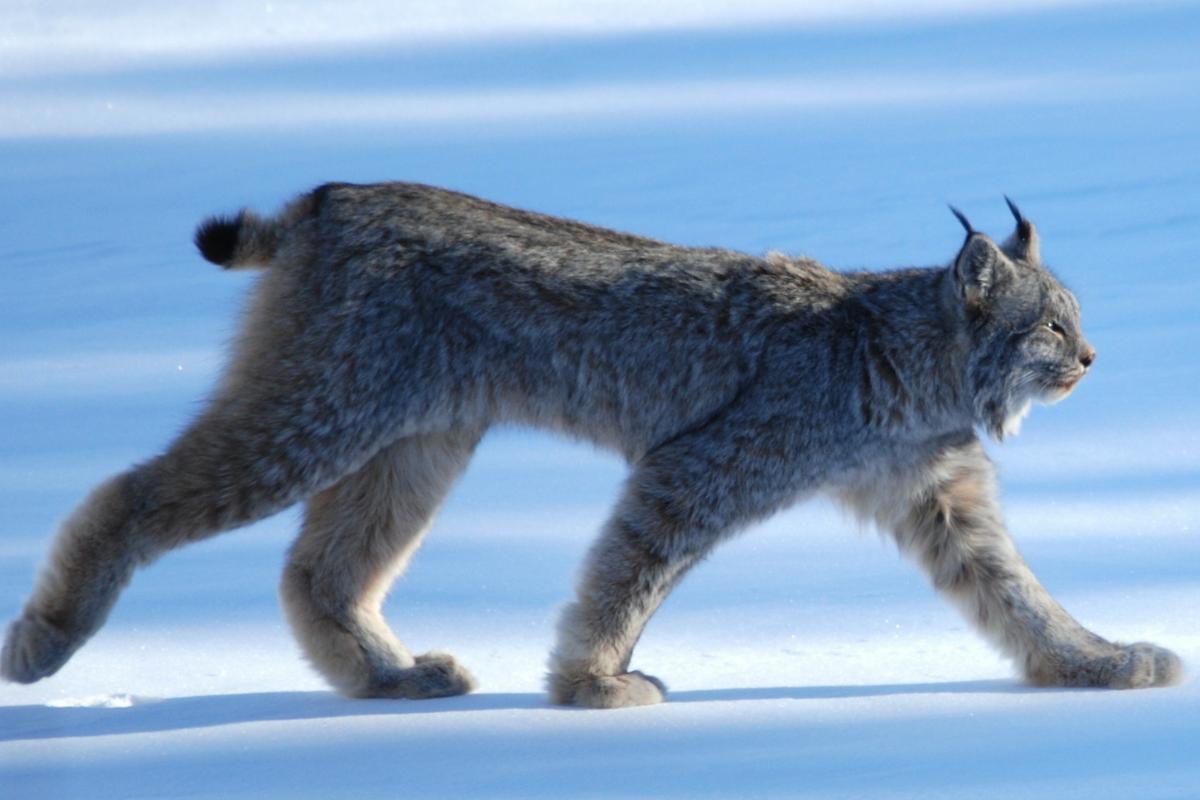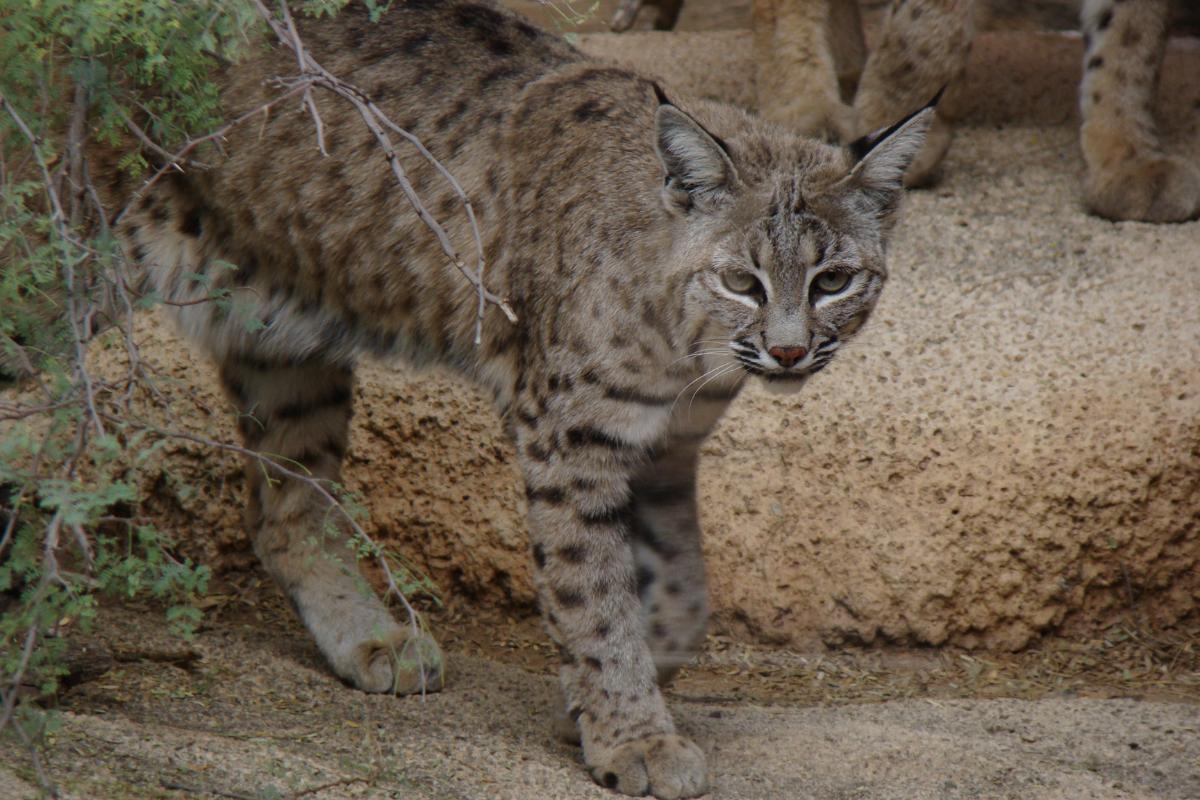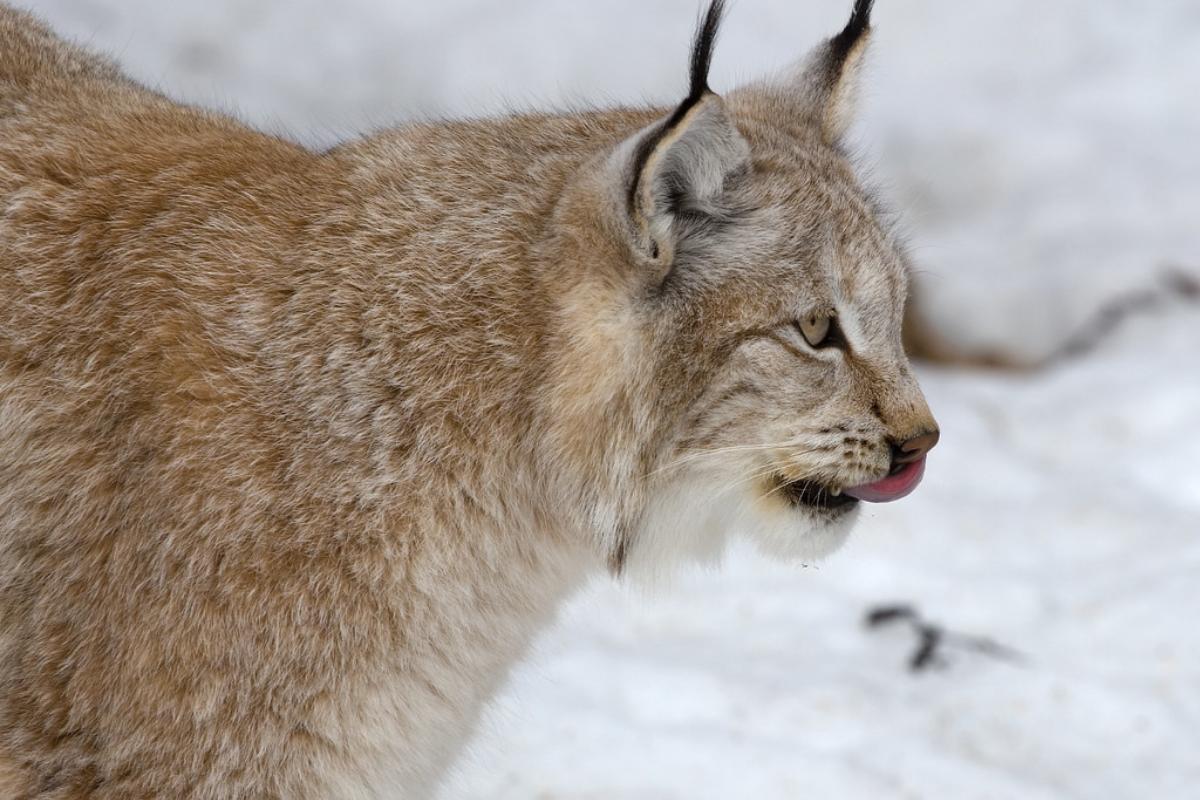Different Types of Lynx Cat


Lynxes are a type of large cat which collectively make up the genus Lynx. While not as big as some other wild felids, they are important carnivorous animals in their ecosystem which help to regulate the food web due to their status as apex predators. Each of the members of the genus have various similarities, such as their tufted ears and padded paws. These adaptations are important for surviving in their environment, providing protection from their often cold habitats, among other advantages. Discover more with thedailyECO as we find out the 4 different types of lynx cat. We see the various characteristics of each lynx cat species, as well as photos of what they look like.
Characteristics of lynxes
While they can live in various habitats, they are most associated with different types of forest ecosystems. These will vary according to the species type and the geographical location they inhabit. Living in such forested ecosystems, they are known to be excellent climbers, affording them a better ability to search out prey. In addition, we can see some of the most important characteristics of lynxes shared by all the lynx types:
- Distribution: lynxes can only be found in the northern hemisphere, with each species dominating a specific geographical area. These areas are Spain, Eurasia and North America. Learn more about the concept of geographical space in our related guide.
- Ears: their ears have tufted hairs emanating from the tips. This makes them look more pointed and helps improve their hearing ability. Doing so enhances their ability to hunt.
- Tails: their tails are short, being relatively shorter than those of other felines.
- Teeth: their jaws are short and they have sharp teeth with especially pointed canines suitable for slashing and slicing their prey.
- Territoriality: as with all cat species, they are very territorial in nature, dominating very large areas. Males do not usually allow other males into their space, but they do allow females to approach.
- Social activity: lynxes are considered types of solitary animals, but when the breeding season arrives, they begin courtship. This includes mating rituals between females and males. The females are responsible for raising their young until they are ready to become independent.
- Body: they have an athletic and flexible body with which they can climb, jump and run with great agility. They are covered by thick fur with striped and speckled patterns. This coat allows them to camouflage themselves among their habitat's vegetation to capture their prey.
- Size: they are classified as medium-sized felids.
Within the genus Lynx there are several species. Each one has their own distinctive traits which we review in the sections below. Learn more about other types of wild cats with our article on the different types of tiger species.

Iberian lynx (Lynx pardinus)
The Iberian lynx measures up to 32.3" (82 cm) and has a mane of long hairs around the face. They are both solitary and nomadic in nature. As their name suggests, they are endemic to the Iberian Peninsula of Portugal and Spain. Generally speaking, they prefer Mediterranean scrublands and forests. The Iberian lynx feeds mainly on hares and rabbits, although they also hunt deer, birds and some small mammals.
Unfortunately, the wild populations of Iberian lynxes have been under threat for some time. In the southwest of Spain there are less than five hundred specimens remaining. Not only is it the most threatened type of lynx, it is considered the most endangered type of felid in the world. The main threats to lynx populations are the following:
- Intensive hunting and as a protection against livestock predation
- The decrease in prey availability of other wild species
- Habitat destruction
As a result of these seriously declining populations, conservation efforts for the Iberian lynx have been underway for some years. A strong legal framework has been created to protect them from hunting. It is protected by Spanish state laws, the Convention on International Trade in Endangered Species of Wild Fauna and Flora (CITES), the Berne Convention and the Habitats Directive of the European Union. There are also multiple breeding programs in captivity and in Natural Parks to recover populations. Although bred in captivity, they are released into the wild.

Canada lynx (Lynx canadensis)
Also known as the Canadian lynx, the Canada lynx has very thick fur to protect them from the freezing temperatures of their native habitat. Endemic to North America, it lives mainly in boreal forests where they are able to hunt among the trees. They have the longest fur of any lynx and are known to live in areas with a high level of snowfall.
In this type of lynx species, you can see the clear dependence between predators and prey. The population of the Canada lynx depends entirely on the availability of the snowshoe hare. When these are abundant, so is the lynx. When populations of the hares are scarce, it can negatively impact on the lynx populations. It is nocturnal, a time it uses for hunting. Fortunately, prey levels are such that it is one of the most abundant types of lynxes.
Learn more about the tundra with our article on what are polar ecosystems?

Bobcat (Lynx rufus)
This next on our list of the different types of lynx cats is also native to North America, but their habitat range is more extensive. Also known as the red lynx, the bobcat lives in areas ranging from Canada all the way down to the state of Oaxaca in Mexico. It is associated with temperate and subtropical climates.
Bobcat habits are cathemeral, meaning they are active both during the day and at night. They feed mainly on hares and rabbits, but can even catch prey as large as deer in some cases. When food is extremely scarce, they can consume carrion.
With such a wide distribution and range of dietary options, the bobcat has stable populations and is considered of ‘Least Concern’ in terms of conservation. Its common name means that not everyone is aware the bobcat is a type of lynx, but they are. Such a wide population range has meant they have also started to enter some human settlements, something not as common in other lynx species.

Eurasian lynx (Lynx lynx)
The Eurasian lynx is the the largest lynx cat species, measuring up to 42" (106 cm) in length, although males are generally much larger than females. Such size allows them to catch and kill animals as large as small deer or chamois. One such animal is usually enough to keep them well fed for a week. Their fur usually changes color and patterns with the arrival of winter. This is likely to better camouflage themselves in the often snowy winter season.
The Eurasian lynx lives in cold forests of northern Europe, Siberia, Mongolia, Korea and Tibet. In some cases, it can also be found in grasslands or meadows, but its main habitat is forests. It is the type of lynx with the greatest geographic distribution, but it has seen populations decimated in parts of Central and Eastern Europe. With the exception of these areas, it generally has a dense population.
While the lynx is not the most ferocious animal, it is an adept hunter. This is partly thanks to its sharp teeth and strong jaw, Discover the animals with the strongest bites in our related guide.

If you want to read similar articles to Different Types of Lynx Cat, we recommend you visit our Facts about animals category.
- Botello, F., Illoldi-Rangel, P., Linaje, M., & Sánchez-Cordero, V. (2006). First record of the ocelot (Leopardus wiedii, Schinz 1821) and the wild cat (Lynx rufus, Kerr 1792) in the Tehuacán-Cuicatlán Biosphere Reserve, Oaxaca, Mexico. Mexican Zoological Act, 22(1), 135-139.
- Breitenmoser, U., Breitenmoser-Würsten, C., Lanz, T., von Arx, M., Antonevich, A., Bao, W. & Avgan, B. (2015). Lynx lynx. Retrieved from: https://www.iucnredlist.org/species/12519/121707666
- Calzada, J., Mora, M., Giles, R., & Márquez, R., (2010) Iberian lynx: legal aspects for the conservation of the species. Malaga: SECEM.
- Mexican National Commission of Protected Natural Areas. (2019). The lynx and its delicateness. Retrieved from: https://www.gob.mx/conanp/articulos/el-lince-y-su-manjar?idiom=es
- Barrera, A. (2012) Relative abundance, activity pattern and habitat characteristics of the puma (Puma concolor (Linnaeus, 1771)) and lynx (Lynx rufus (Schreber, 1777)) in the La Primavera Flora and Fauna Protection Area , Jalisco Mexico. Retrieved from: https://riudg.udg.mx/bitstream/20.500.12104/84665/1/LCUCBA10017.pdf
- Beatty, R., Beer, A., & Deeming, C. (2010). The book of nature. Great Britain: Dorling Kindersley.














